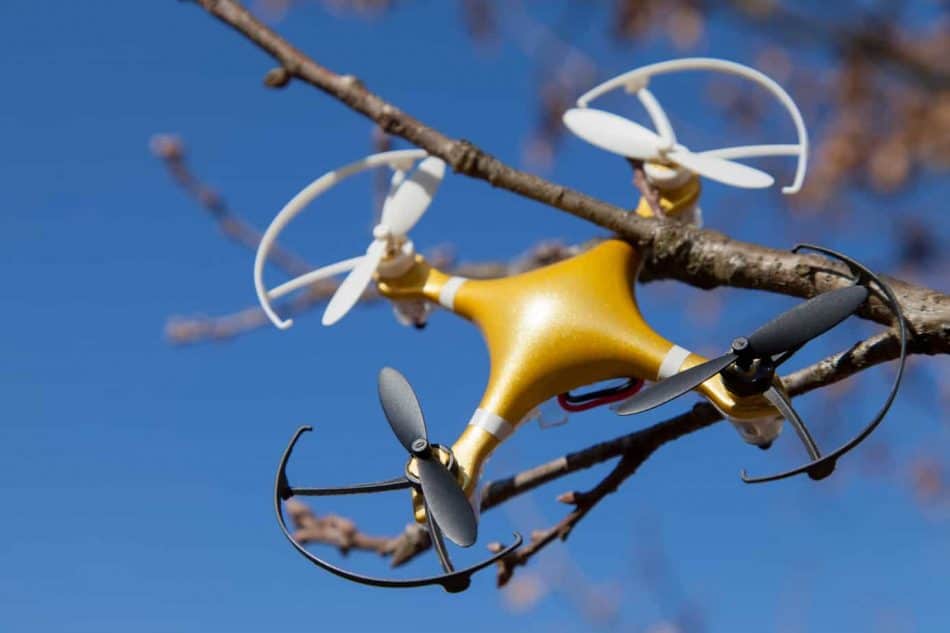
and Rescue personnel, or a hobbyist, drones have evolved into becoming a versatile tool to be used in numerous ways.
What did I wish I knew before I bought a drone?
I wish I had known the wide range in prices, the primary purpose for a drone, battery lifespan, difficulty in controlling a drone, and the legal side of owning a drone.
There are drones that can go around $100 to the more advance and larger drones that can cost easily above $1000. These prices depend on several factors which can be overwhelming for first-time buyers.
This guide will helpfully give you a certain direction into the drone world. Points within this guide will cover all the necessary basics for a new drone pilot before purchasing the very first drone.
What is a Drone?
Drones have been associated with the military field. Terms such as Unmanned Aerial Vehicles (UAV) or Unmanned Aerial Systems (UAS) are synonymous. The commercial drones we see these days are built for recreational purposes. However, many have used drones for purposes such as:
- Aerial Photography
- Building and Roof Inspection
- Wildlife Tracking
- Construction Mapping
- Real Estate Photography
In these past few years, the UAV & drone community have also been on a fast growth due to the advancements in drone technology.
The industry has grown exponentially; therefore, owning a UAV/Drone has become more accessible, easier, and cost-effective to the public.
In addition, the commercial aviation sector is evolving due to drones. New regulations are being put in place by government entities such as:
- Federal Aviation Administration (FAA) in the US
- Transport Canada (TC) in Canada
- Civil Aviation Authority (CAA) in the UK
There are similar agencies in countries throughout the world. However, the laws and regulations on drones are still new and unrefined, which needs much room for improvement.
The Popular Multi-Rotor Drones
The multi-rotor drones are the most user-friendly and cheapest drones in the current market. This type of drone is popular among people who are into aerial photography and videography.
Although drone tech is improving all the time, multi-rotors are known to be inefficient based on two factors: limited battery span and speed. These downsides make them unsuitable for tasks such as:
- Long Endurance Monitoring
- Long Distance Inspection such as pipelines, roads and power lines
- Large Scale Aerial Mapping
Multi-rotor drones require a lot of battery power for flights. In addition, with the current drone battery technology, multi-rotor drones are limited to, at most, 20-30 minutes which includes a lightweight camera payload.
The heavy-duty multi-rotors can carry more weight but in exchange for much shorter flight times.
Here are a few examples of Multi-Rotor Drones:
- Dromida: Toy drones, which are the lower end of the spectrum. The Dromida is a simple and inexpensive drone model which are more focused on fun than special features
- DJI Mavic 2 Pro: Used by many professional photographers and videographers. The DJI Mavic 2 Pro has high-quality, durable, professional-grade areal camera. They can go up to 5 miles. In addition, video drones often come with gimbals, which is a mechanical system designed to pan and tilt the camera smoothly during flight
- Hobby Tiger H301S: These drones are considered as competition drones; smaller and designed specifically for speed and agility. Drone pilots will be able to see through the drone’s lens via first person-view headsets
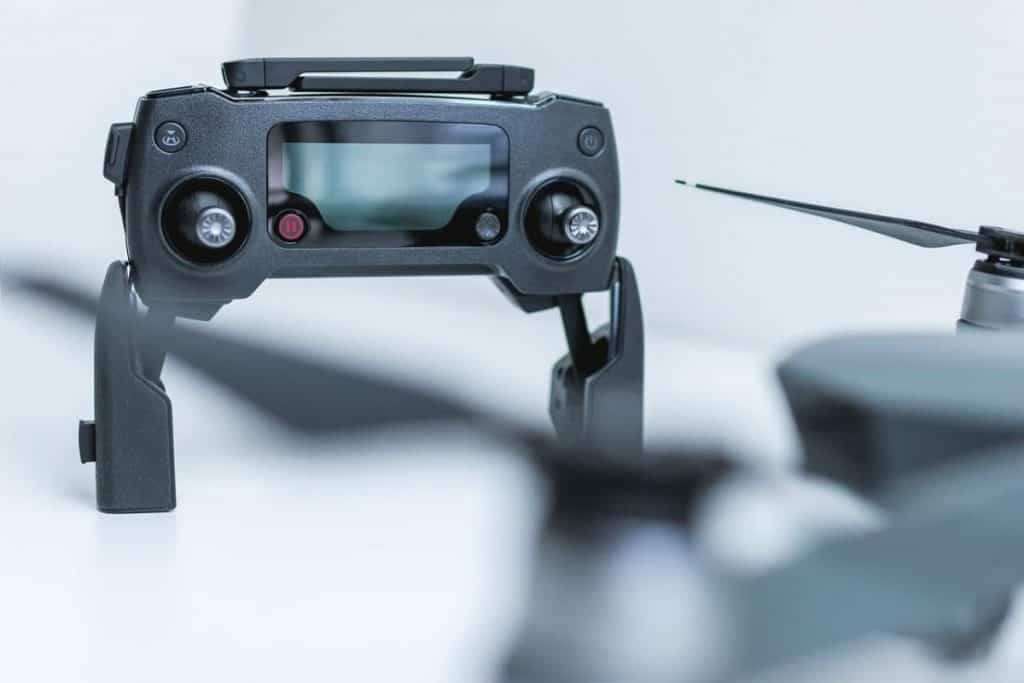
Drone Flight Time
Choosing the drone capable of having the longest flight time often means spending more money. However, two factors can be taken into account in order to purchase a drone with an above-average flight time without damaging your bank account.
One of the first features to investigate is battery capacity. Obviously, before purchasing a drone, one needs to look into the capacity of the drone model’s battery.
The better the quality of the battery, the longer the drone can last during flight. However, with a better quality of the battery means the more expensive the drone model will be.
The second feature to look into is the capability to remove or replace the battery. Having this factor can give you the option to pre-charge extra batteries without having to worry about the current battery you are using.
You won’t’ have to run back home to charge the drone. The length of flight time in the air can be extended through the purchase of extra battery packs and switching them out within minutes while in the flying field.
Seven Minutes Fly Time
Drone toys are usually of interest for entry-level drone pilots such as kids or hobbyists. These drones usually can fly for up to seven minutes.
These entry-level drones are suitable for those who are learning how to fly for the first time, or for fun and recreational purposes.
Additionally, these drones also have the bonus of being extremely affordable and are perfect for people who aren’t certain if they want to invest in a more advanced and capable drone.
Therefore, the investment should be minimal, to begin with; see how it plays out, and then decide whether getting an advance drone is the right move.
Up to Fifteen Minutes
Fifteen minutes of flight time is an overall improvement over the seven-minute fly time mark. The 10-minute fly time is considered by many drone pilots to be the average flight times for the multi-rotor drones in the current market. Drones with the 15-minute fly time are a more popular choice by many who may be looking for:
- Recreational Purposes
- Aerial Photography
- Ariel Videography
Up to Half an Hour of Flight Time
Drones with up to 30-minute fly time are advanced and professional class drones. These are commonly used by serious drone enthusiast who has already accumulated a significant number of flying hours, or companies and private business’ who used the drones as tools in the following:
- Inspections
- Scout/Tracking for Wildlife Personnel
- Search and Rescue
- Aerial Mapping
- Cinematography
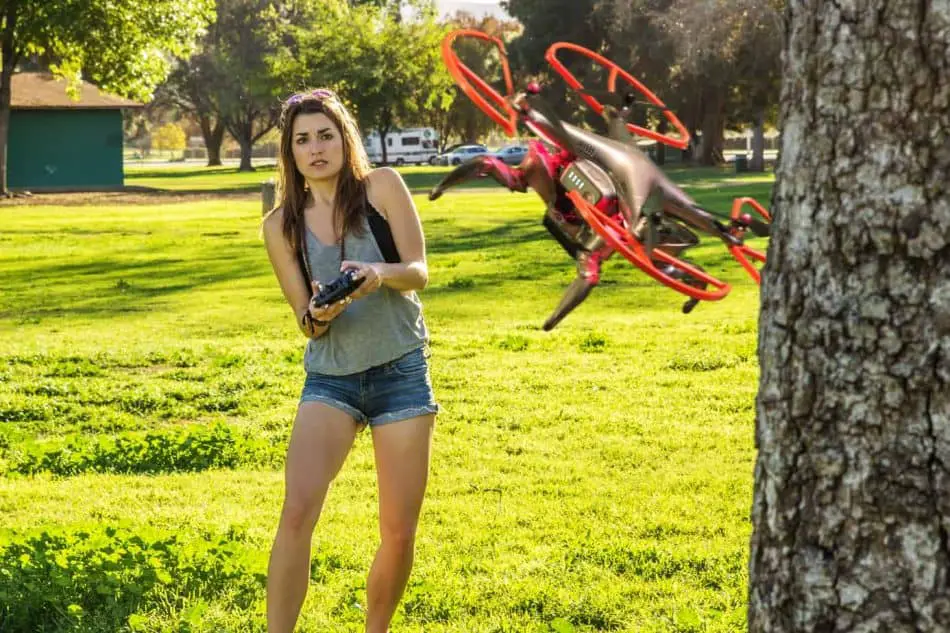
Is it Difficult to Fly a Drone?
Many first-time drone pilots assume that flying drones are extremely difficult. When in fact, it is not difficult at all. Mastering the basics of the controls is only a small part of making flight easy.
What makes a drone difficult to fly, can be caused by external factors. Drone pilots need to understand the basics of identifying external factors that can affect drone flight which include:
- Conduct pre-flight check-up
- Monitor Weather Conditions
- Be aware of your surroundings such as trees, pole lines, etc.
- Fly in Ample Light Conditions
- Visibility
- Open area for takeoff and landing
In addition to external factors, drone pilots should always monitor the drone’s quality, software, and hardware. Quality control of the drones assures an optimal flying experience. These drone checkups would include:
- Drones and Controller are properly connected
- Drones external conditions; wear and tear on drone frame, propellers, cameras, etc.
- Listening to abnormal sounds
- Check for software warnings
- Battery Quality and Capacity
Drone pilots are expected to be familiar with their drones and weather conditions that are ideal for the perfect flying experience.
With more planning and preparation, flying a drone can be done safely, easily, and without any incident. As drone pilots become more comfortable with their drones, flying becomes more natural through time.
How Far Can a Drone Fly
There are several factors that can affect a drone’s travel radius. One of the few factors to be noted was mentioned beforehand, the lifespan of the battery.
A larger-size drone will drain its battery much quicker compared to a small one. This is due to the propellers having to work much harder in order to maintain a fly time depending on the extra weight.
If the drone is heavier or must carry a certain load (camera, package, etc.), the propellers must work twice as hard in order to maintain fly time, resulting in draining the supply of the battery much quicker.
A drone pilot must consider the amount of time to fly away and fly back to the pilot. Again, it all comes down to the battery life span.
Let’s say a drone with a lifespan of 7 minutes; that means the drone can only fly away for 3.5 minutes from the pilot and add another 3.5 minutes in order to fly back to the pilot.
The next factor is the strength of the connection. Toy drones could go as far as 20 meters, whereas more advanced drones can fly as far as a couple of miles.
When looking for the right drone, one will find out that there’s a relating factor between the connection strength of a drone, and how significantly expensive those drones can be. For example, the Autel EVO is a professional class drone with an operating range of 4.3 Miles
How High You Can Fly a Drone
While drones may be able to fly thousands of feet in the air, it is not legal to do so. One hobbyist decided to pull off a high-altitude flight with a drone, reaching up to 11,000 feet. However, one must realize that a drone can only fly as high a country’s law and regulation will let them.
Even with regulations in place, drones are usually not equipped to fly to great heights. Many manufacturers have set limits of maximum altitudes that a drone can fly to with obvious safety reasons such as to avoid interference with air traffic (private or commercial planes).
In addition, the higher the altitude a drone can reach, the less of a lift it produces from the propellers. Without the capability of a proper lift, the drone could cease to function and plummet down towards the ground.
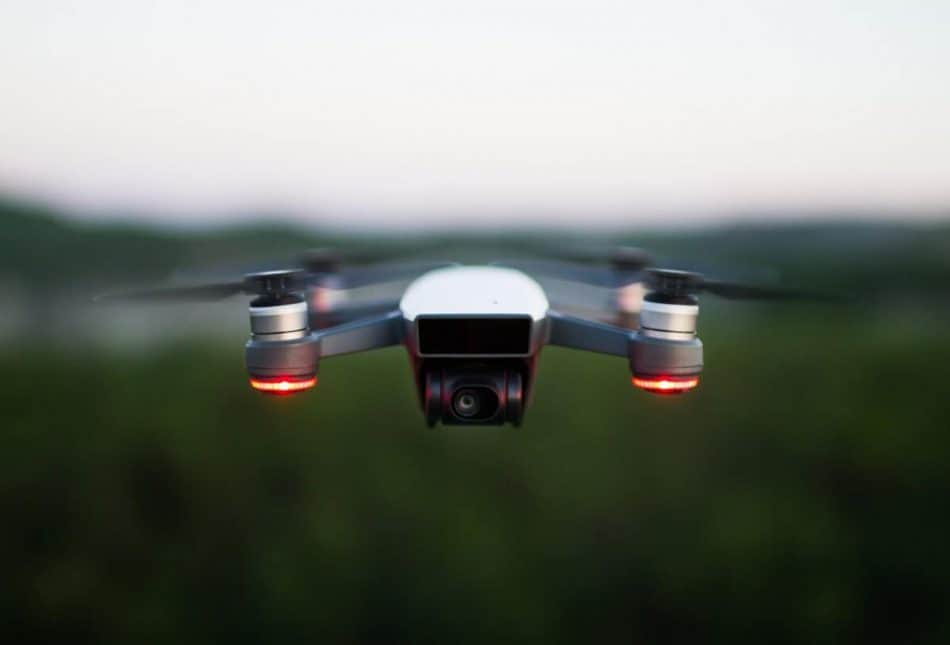
Drone Laws and Regulations
It’s no surprise that each country has their own sets of laws on how high a pilot can fly their drone. With drones’ rise of popularity, state and local laws are becoming increasingly complicated.
Some regulations allow pilots to fly drones if the drones are within sight, while other countries allow drones to fly quite high, but to a certain height.
This security measure is to prevent drones from interfering with private or commercial aircraft. For example, most US states permit drone owners to fly up to 400 feet high. In the EU, pilots can fly a drone as high as 500 feet from the ground.
There are several sites and sources that can keep drone pilots informed on drone laws. The National Conference of State Legislatures (NCSL) provides a list of laws by state.
In addition, UAV Coach, a leading drone training, news, and education company provides all crucial drone laws by US states and countries around the world.
Registering Your Drone in the UK
As of November 2019, registration of drones and their pilots are mandatory. One can find more information at the UK’s new Drone and Model Aircraft Registration and Education Service.
Anyone who pilots a drone or unmanned aircraft weighing between 250g and 20kg is required to complete two important steps. These include:
- Register as a drone pilot. The cost for registration is £9 which are renewable annually
- Must take and pass an online package which is free and renewable every three year
One can find more information at the UK’s Drone and Model Aircraft Registration and Education Service.
Registering Your Drone in the US
As of December 2015, the US Federal Aviation Administration required that all drones which weigh more than 250 grams that are flown for any purpose must be registered.
If the pilots plan to be compensated for the usage and flight of the drone (such as selling drone landscape photos and videos), it is an additional requirement to register the drone under the “Part 107” of the commercial drone system.
The FAA requires that drone pilots must display the registration number on the exterior of their drone and that the drone pilot has received authorization through Low Altitude Authorization and Notification Capability (LAANC) before a drone pilot is allowed to fly in controlled airspace.
Registering Your Drone in Canada
As of June 2019, drone pilots must register their drone through Transport Canada (TC). Drones that have a maximum weight of 250 grams and up to/including 25 kilograms must be registered.
However, Drones under 250 grams and over 25 kilograms do not need to be registered. Pilots are required to have a special flight operations certificate in order to operate a drone, over 25kg
In addition, pilots must mark their drones’ exterior with its registration number before they can operate.
The TC may fine drone pilots if pilots do not mark their drone with its registration number before operating it. Flying an unregistered drone may be fined up to $1,000 for an individual and $5,000 for a corporation.
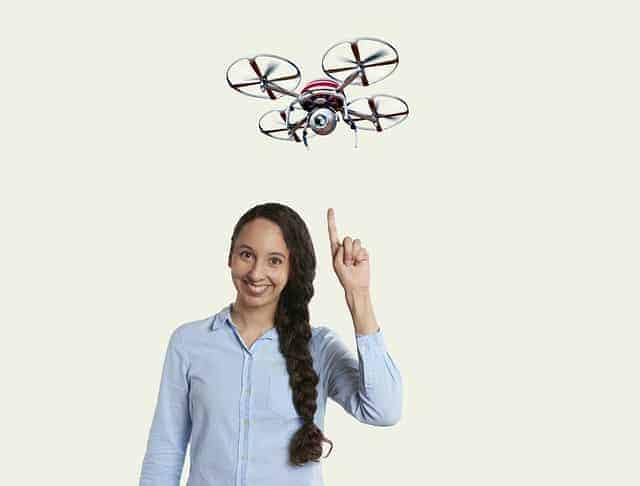
Do I Nedd Drone Insurance?
In the United States, drone insurance is currently not required by the FAA for recreational or commercial use. However, in the state of Minnesota, there are insurance requirements based on the purpose of the drone through the Minnesota Statute 360.59.
Drone Liability Insurance is like typical car insurance; the policy will be able to protect you from a third-party claim of property damage or injury. An example of a possible claim would be accidentally such as:
- Crashing your drone into another drone
- Crashing your drone to a car
- Hitting your drone on a bystander who was unfortunate enough to get hit and therefore covering medical costs
Even though drone insurance is not required by law, there are things to consider with having a minimum level of insurance that covers liability. Especially for a drone that would be taking on projects from the following:
- Film Studios
- Construction Companies
- Wildlife Organizations
- Freelance Photographers & Videographers
These vendors would need to be considered in having reliable insurance due to the size of the projects these drones will be conducting
Drone pilots have the option to purchase their liability insurance “on-demand”. This means that drone pilots are only required to pay for the liability insurance during the time the drone is on the flight.
SkyWatch is the current leading “on-demand” drone insurance provider in the US and CANADA where policies start roughly around $5 – 10$ per hour which covers the following
- Bodily Injury
- Personal Injuries & Medical Coverage for up to $500
- Property Damage
- Invasion of privacy claims
For larger operations by businesses and companies, limits of their drone liability insurance can start at $500,000 and can be negotiated to as high as the business needs it to be.
Drone Hull Insurance is also a common type of drone insurance where the drone pilot is insuring the actual drone itself. If a drone pilot is flying an expensive DJI camera drone model, then a drone hull coverage is something the drone pilot would want to consider.
A drone pilot that has purchased a drone hull insurance policy will receive a coverage amount that will be equal to the market price of the drone for repair services. In addition, there is no limit to the number of times a drone can be repaired.
However, the drone pilot must be aware of the total coverage amount and that the cost of the repair does not exceed the total coverage amount.
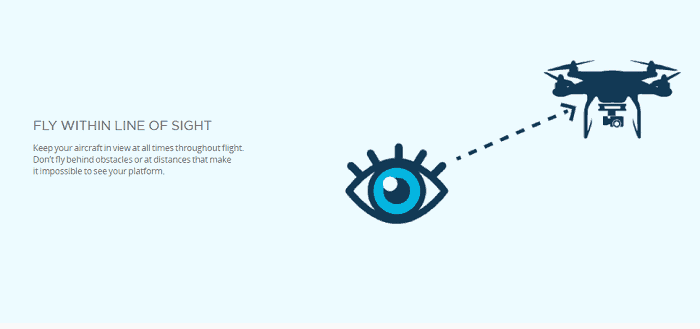
Finally,
Safety when flying should be regarded with the highest respect and prioritized before anything else. As long as you follow the rules and take extra precautions, drone flying can be an enjoyable activity for many.
I wish you a safe flight. Enjoy the times with your kid(s)…and stay out of the tree.
